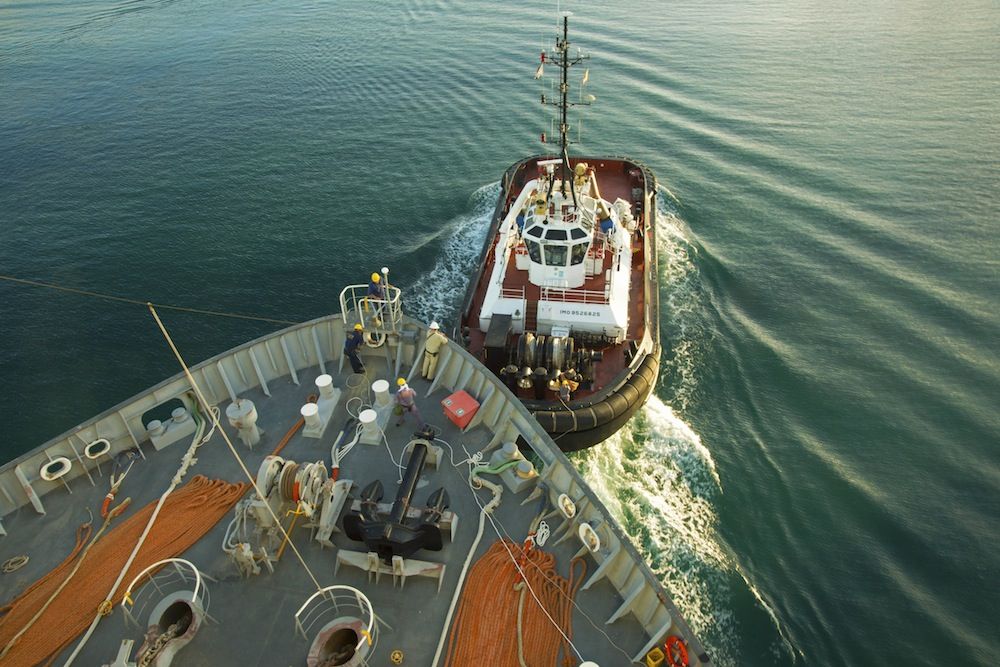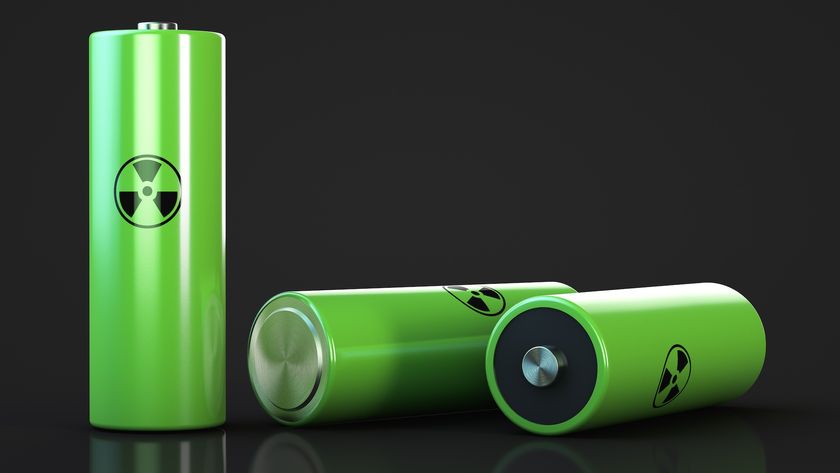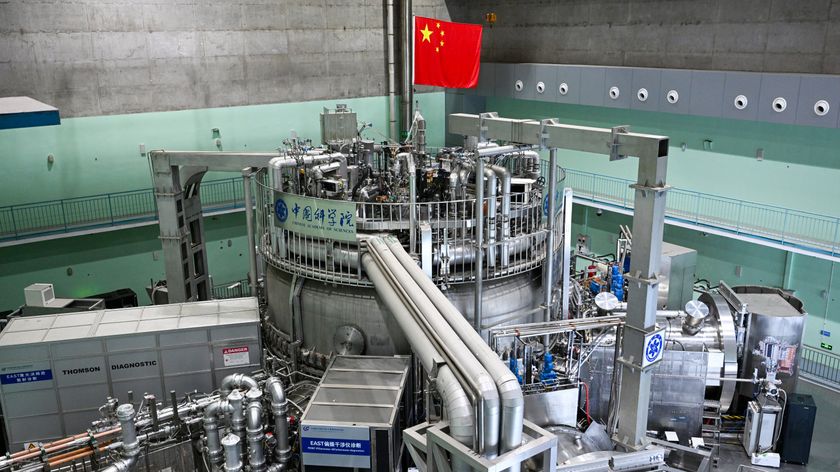How Syria's Chemical Weapons Are Being Destroyed

Somewhere in the Mediterranean Sea, military and civilian experts aboard a U.S. cargo ship, the MV Cape Ray, are disposing of Syria's arsenal of deadly chemical weapons. Some of these chemicals — including those needed to produce the nerve agent sarin — were reportedly used by the Syrian government in attacks last year that killed nearly 1,500 Syrian civilians.
Much of Syria's chemical weapons stockpile has already made its way to Finland, the United Kingdom and the United States, where government contractors have been working for months to destroy roughly 1,300 tons of chemicals. The arsenal is being destroyed in accordance with regulations set forth by the Organization for the Prohibition of Chemical Weapons (OPCW).
In September 2013, Syrian President Bashar al-Assad agreed to join the OPCW's Chemical Weapons Convention, which required him to forfeit Syria's chemical weapons and destroy chemical production and storage facilities around the country. [5 Lethal Chemical Warfare Agents]
But getting Syria to put an end to its chemical weapons program was only half the battle, said Hamish de Bretton-Gordon, a chemical weapons expert with SecureBio, a chemical, biological, radiological and nuclear (CBRN) security firm based in the United Kingdom. In the midst of the nation's civil war, the OPCW was tasked with creating a plan to safely remove chemical weapons from Syria. There was also the somewhat daunting task of disposing of 1,300 tons of deadly chemicals.
"Nobody would accept this stuff," de Bretton-Gordon told Live Science. Germany and Albania, for instance, refused to let the most lethal of Syria's chemical weapons cross their borders, he said.
The United States eventually stepped forward with a plan for disposing of what de Bretton-Gordon calls the "nastiest" of Syria's chemicals, which include mustard gas and DF compound, a component of the nerve agent sarin. Rather than ship these chemicals to a particular nation, the U.S. outfitted a marine vessel with the necessary equipment to destroy the chemicals at sea.
Hydrolysis at sea
Sign up for the Live Science daily newsletter now
Get the world’s most fascinating discoveries delivered straight to your inbox.
The MV Cape Ray, currently anchored in international waters in an "unspecified" location in the Mediterranean, is a first-of-its kind vessel equipped with two so-called field deployable hydrolysis systems (FDHS) that are used to neutralize toxic chemicals.
Hydrolysis systems aren't a new technology, said de Bretton-Gordon, who worked as a CBRN specialist in the British Army for 23 years. These systems have been used for decades to neutralize the chemical stockpiles of nations like the U.S. and the U.K. But putting these systems aboard a marine vessel is a unique way to deal with chemical weapons.
The Cape Ray contains two FDHS units, contained within an "environmentally sealed" tent, according to the U.S. Department of Defense. Each unit is equipped with a titanium-lined reactor in which corrosive materials can be processed safely. The units also have built-in redundant systems that protect them from unanticipated glitches.
The hydrolysis units mix about 100 gallons (380 liters) of toxic chemicals with thousands of gallons of seawater, as well as another neutralizing chemical, or reagent, de Bretton-Gordon said.
In some cases, a mix of reagents — base compounds such as potassium or sodium hydroxide — are used for this purpose, said Dennis Reutter, a retired U.S. Army scientist who was not involved in the OPCW program for Syria's chemical weapons. For the mustard agent, which isn't soluble in water, Reutter said that a co-solvent, like monomethylamine, is typically used in the hydrolysis process.
In total, the Cape Ray will process approximately 772 tons of chemicals, including all of Syria's declared mustard agentand more than 600 tons of "Priority 1" chemicals, which are the most dangerous chemicals declared by the Syrian government.
Safely destroying chemicals
The resulting mixture of acid chemicals and base reagents are then vigorously mixed, making the deadly chemicals much less harmful, Reutter said. These safer chemicals, known as effluent, can then be disposed of in a variety of ways, including through incineration or other waste management processes.
In the incineration process, nonlethal chemicals and the containers that hold them are burned inside of a commercial incinerator, Reutter said. De Bretton-Gordon said that weapons that once contained chemicals, like empty missile shells, could also be disposed of in this way. The smoke produced as a result of this process typically passes through a series of filters and condensers that render it nontoxic, he said.
In the United States and other countries, incineration is commonly used to dispose of chemical waste, according to de Bretton-Gordon, who said that the effluent produced by the Cape Ray, as well as Syria's store of "Priority 2" chemicals, will likely be disposed of in this way. Priority 2 chemicals are toxic, but not as deadly as the Priority 1 chemicals being destroyed aboard the Cape Ray, according to de Bretton-Gordon.
"['Priority 2' chemicals] are toxic chemicals that are burned in the U.K. and virtually every other country all the time. Some of the things that are in there are hydrochloric acid and hydrofluoride— strong acids," de Bretton-Gordon said.
The nearly 1.5 million gallons (5.7 million liters) of effluent produced by the Cape Ray will be stored onboard the ship until it can be transported to one of several countries, where it will be destroyed for good. According to the OPCW, Germany will receive all of the effluent that results from the neutralization of Syria's mustard gas. Finland will also receive nearly 1,200 gallons (4,500 liters) of effluent from the Cape Ray.
The OPCW has specified that Priority 2 chemicals processed in the United States will be disposed of via incineration. The organization has not detailed how Finland and Germany will be disposing of their share of the chemicals from Syria and the effluent produced by the Cape Ray.
Follow Elizabeth Palermo on Twitter @techEpalermo, Facebook or Google+. Follow Live Science @livescience. We're also on Facebook & Google+. Original article on Live Science.

Elizabeth is a former Live Science associate editor and current director of audience development at the Chamber of Commerce. She graduated with a bachelor of arts degree from George Washington University. Elizabeth has traveled throughout the Americas, studying political systems and indigenous cultures and teaching English to students of all ages.












